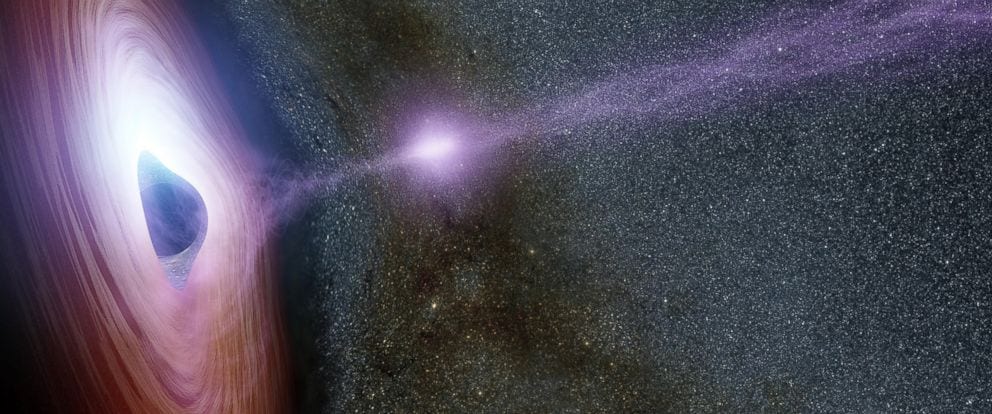NASA is set to launch 3 telescopes fixed on a spacecraft to study black holes in 2020. Black holes, since knowing of their existence has been a topic of mystery and now NASA is sending a spacecraft on this mission costing about $188 million to find out more about these mysterious holes.
“We cannot directly image what’s going on near objects like black holes and neutron stars, but studying the polarization of X-rays emitted from their surrounding environments reveals the physics of these enigmatic objects,” said Paul Hertz, astrophysics division director for the Science Mission Directorate at NASA Headquarters in Washington. “NASA has a great history of launching observatories in the Astrophysics Explorers Program with new and unique observational capabilities. IXPE will open a new window on the universe for astronomers to peer through. Today, we can only guess what we will find.”
The black holes can’t be studied directly but heat up the nearby gases which in turn emit X-rays. The three telescopes will then measure the polarization or direction of vibration of the X-rays.
The mission is called Imaging X-Ray Polarimetry Explorer (IXPE) which will provide data about the environment around black holes.
This mission is said to be leaded by Principal Investigator Martin Weisskopf of NASA’s Marshall Space Flight Center in Huntsville, Alabama. And the spacecraft will be provided by Ball Aerospace in Broomfield, Colorado.
The Italian Space Agency is helping to develop the cameras that will be measuring the powerful X-rays radiating from black holes.
This mission will hopefully reveal many secrets and gives us knowledge about black holes and the universe, fascinating us.
Some simple reminder facts about black holes
- When dying stars explodes, black holes are born.
- Black holes have so much gravity, that not even light-the fastest thing- can escape.
- It is said that if you fall in black hole, you will be stretched like a spaghetti!
- Passing close by stars can be torn apart by black holes.
